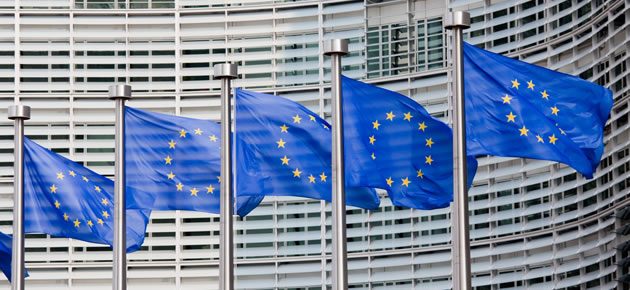The Eurozone has seen disappointment on Tuesday by way of disappointing data, specifically revised PMI figures for the currency bloc’s largest economy and lacklustre unemployment figures.
Although Italian Manufacturing PMI was predicted to remain idle at 53.2 it instead declined to 52.6, as did the German Manufacturing figure which instead of stagnating at 52.4 as predicted, fell to 52.0%.
Additionally Eurozone Manufacturing as a whole performed poorly also with a drop from the former 52.2 to 51.8 meaning it was 0.1 shy of the forecast reading of 51.9.
Euro movement was a little limited after these reports were released, although the common currency did slide against the Pound.
Conversely, Thursday could prove to be a significant day for the Euro with a host of data scheduled for release including French, German Italian and Eurozone, Services and Composite PMI alongside Eurozone Retail Sales, ECB Deposit Facility Rate, Marginal Lending Facility and ECB Rate Decision.
The Eurozone has seen a mixed bag of results unfold in recent weeks and it looks like this may remain the case for some time.
Representative for Markit, Chris Williamson, commented on the recent negative data stating that the figures seen today ‘will raise concerns that the Eurozone recovery is losing its momentum.’ He added that although there were ‘encouraging signs of growth, the overall picture is a reminder of just how fragile the regions recovery is looking.’
Amongst the negative results seen today came positive French Manufacturing PMI which bettered the forecast of stagnation at 47.8 and instead rose to 48.2. That being said, the figure remained shy of the 50 mark separating growth from contraction.
The Pound however has seen a series of good data results leading economists to speculate that the interest rate level will soon be increasing.
Mark Carney dampened hopes last week after suggesting that interest rate hikes could be sooner than first thought, taking a seemingly cool approach saying that any rate rises would have to be ‘limited and gradual’, much to the disappointment of many.
The Pound dropped slightly following Carney’s vague and conflicting statements, however data this week has pushed the Pound to its highest point against the US Dollar since 2008, with the pairing currently trading in the region of 1.7150.
The Pound has seen gains from an un-forecast rise in UK Manufacturing PMI on Tuesday; instead of dropping to 56.8 from 57 as predicted, the data instead rose to an unexpected 57.5.
Currency expert Alan Clarke stated: ‘PMI readings like this would support the case for an [interest rate] hike this side of Christmas.’ Speculation increases that statistics like this lend to the notion of the Bank of England downplaying the economic strength for the UK.
The strong Pound (GBP) is currently trading against the Euro (EUR) at 1.2530, with more gains possible on the publishing of hopefully positive UK PMI figures on Wednesday and Thursday. The Euro in its weakened state could gain against other majors if its heavy data week proves fruitful.
Euro to Pound – UPDATED 12:00 GMT, 02 July, 2014
The Pound (GBP) exchange rate managed to achieve a 21-month high against the Euro (EUR) during European trading on Wednesday as the UK’s impressive Construction PMI report made a marked contrast with the Eurozone’s lacklustre manufacturing figures (published yesterday) and today’s concerning Producer Price Index (which showed an unexpected decline in prices).
The UK’s economy continues to go from strength to strength while the Eurozone is struggling to garner any sort of momentum amid persistently low inflation.
Tomorrow’s European Central Bank policy meeting and UK services PMI could have a considerable impact on the Pound Sterling (GBP) to Euro exchange rate as the week continues.



